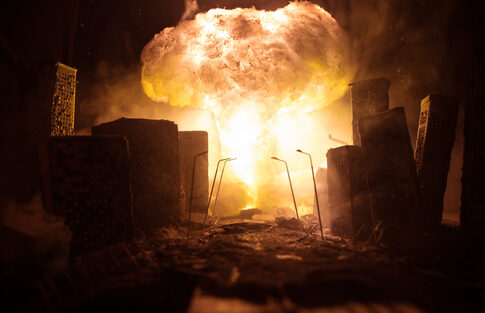A strategic nuclear exercise under Putin’s direct supervision raises global tensions and questions NATO’s readiness.
Russia’s Strategic Nuclear Exercise
Russian President Vladimir Putin personally supervised a comprehensive nuclear readiness test involving Russia’s strategic nuclear forces. The exercise involved the launch of missiles from land, sea, and air, demonstrating the full capability of Russia’s nuclear triad. This activity coincided with NATO’s annual nuclear-deterrence exercise, increasing the scrutiny over military signaling and the potential for escalation between the two nuclear powers.
The timing of Russia’s exercise, led by Putin, suggests a strategic message aimed at both domestic and international audiences. Although the Kremlin maintains that the drill was scheduled in advance and not a response to NATO’s concurrent activities, the situation has nonetheless heightened tensions. Military analysts point out the drill’s potential as a tool for strategic signaling, emphasizing the need for clear communication channels to prevent misunderstandings.
The Role of Nuclear Deterrence
Nuclear deterrence remains a cornerstone of Russia’s defense strategy, rooted in Cold War doctrines to ensure a credible retaliatory capability. Regular readiness drills, such as this one, are intended to showcase operational reliability and resolve. These exercises are not uncommon, but the overlap with NATO’s similar activities underscores ongoing strategic competition and mutual suspicion between the blocs.
Both Russia and NATO are keenly aware of the risks associated with nuclear brinkmanship. The exercises highlight the complex dynamics of global security, where military posturing and rhetoric can quickly escalate tensions. Observers have noted the increase in military exercises and nuclear signaling, particularly since the Ukrainian crisis of 2014, which continues to influence Euro-Atlantic security relations.
🚨 Russia conducted strategic nuclear drills, successfully test-firing a Yars intercontinental ballistic missile from Plesetsk Cosmodrome to the Kura range in Kamchatka, spanning nearly all of Russia, per Russian media.
The drill involved Russia's nuclear triad—land, sea, and… pic.twitter.com/o1hewcR4Am
— DefenseByte (@TheDefenseByte) October 22, 2025
Implications and Reactions
The successful execution of Russia’s nuclear triad drill, as confirmed by the Kremlin, included the launch of Yars ICBMs from land, Sineva missiles from submarines, and cruise missiles from Tu-95 bombers. Despite the assurances of routine operation, the timing has led to increased vigilance among NATO allies, who continue their own exercises in the region.
In the short term, the parallel exercises have increased tensions and the risk of misinterpretation or escalation. In the long term, this highlights the continuing importance of nuclear deterrence doctrines and the potential acceleration of an arms race. The exercises also underscore the need for renewed arms control dialogues to mitigate the risks of nuclear escalation.
Sources:
Russia launches full nuclear triad drill while NATO runs parallel nuclear exercise
Vladimir Putin oversees readiness test of Russia’s nuclear forces



The Russians are war mongers n interested in taking over the world so NATO keep vigilance n make sure their not postering for war with the West!